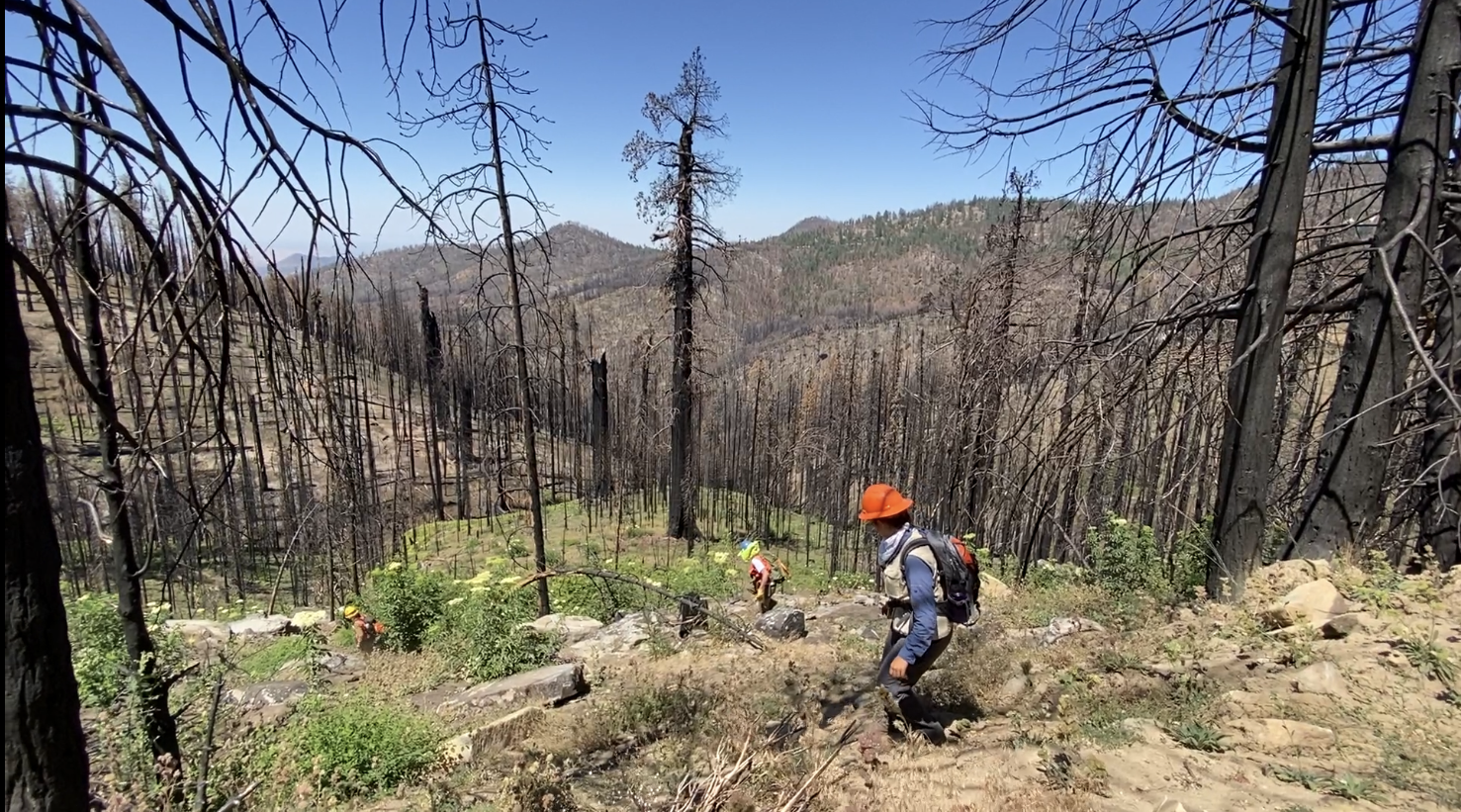The Role of Active Management in Preventing Catastrophic Wildfires
Active forest management is an effective approach towards achieving fire-resilient forests, which involves practices such as thinning overgrown forests, removing hazardous fuels, and restoring natural fire regimes. These strategies aim to decrease the amount of fuel available to wildfires, thereby slowing down their spread and reducing intensity, making them easier to control.
Krista Modlin, NWTF Pacific Coast district biologist, highlights that one of the best tools for measuring forest resiliency is stand density. “Low-density stands reduce tree competition and create forests that can adapt to wildfire, drought, bark beetles and climate change”.
The Klamath National Forest has been identified by the USDA Forest Service as an area with over 500 trees per acre, interlocking crowns, and a decline in growth. Such conditions pose a severe risk as the trees become vulnerable to stress, insect and disease-related mortality, increasing fuel for wildfires once they fall to the ground. To reduce the risk of future catastrophic wildfires, harvesting standing timber helps to decrease the density of the forest and eliminate fuel for them to burn.
Forests that are overstocked and dense are particularly vulnerable to wildfires because they contain an excessive amount of fuel that can easily spread a fire. As a result, vast acres of habitat are being destroyed at a rate that land management agencies struggle to keep up with, taking decades for young forests to mature again.
In addition, the Forest Service's 2022 aerial detection survey revealed that the Klamath National Forest had an estimated 140,000 acres of mortality, with approximately 1,800,000 dead trees. These alarming figures indicate that several parts of the National Forest are at a high risk of total destruction from wildfires.
“The high number of snags per acre standing after a fire poses high fire danger in the future,” said Modlin, “the dead and dying material left on the landscape needs to be removed in order to prevent another catastrophic fire in the same area.”
Therefore, proactive management practices are essential to increasing resilient forest ecosystems that can withstand catastrophic wildfires. Over time, such practices will enable the forest to return to a more natural and healthy state, reducing the risk of future catastrophic events.
The timber transport pilot is enabling the NWTF, the Forest Service and the California Deer Association to reduce stand density in the Klamath National Forest by harvesting 2,746 acres of excess standing timber. Additionally, fuels reduction and wildlife habitat improvement will also be achieved through 1,605 acres of brush mowing and juniper felling, 592 acres of juniper reduction, 264 acres of plantation thinning, and 866 acres of mastication.
Through the master stewardship agreement and active forest management, a significant decrease in the accumulation of hazardous fuels in the Klamath National Forest is being achieved through harvesting fire-salvaged trees. Removing these fuels enhances the forest's ability to withstand these detrimental wildfires, reduce stand density and promote the development of healthier forest ecosystems. Enhancing the resilience of forests against wildfire disasters will help California communities surrounding the National Forest to become more resilient and safer areas to live in.
The region 5 stewardship agreement offers various other benefits to communities, such as improved air and water quality, increased wildlife habitat, and greater opportunities for outdoor recreation. To learn more about these critical conservation priorities, explore the Forest Service’s Wildfire Crisis Strategy and the NWTF’s Four Shared Values.
